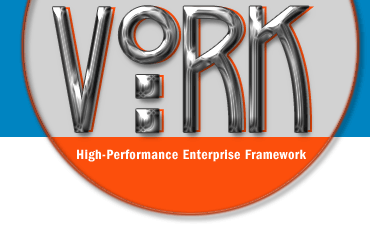Vork PHP Framework Apps
Login with Facebook to add your own app!
- Amazon Simple Email Service (Amazon SES)
- Binary Converter
- CakePHP File + Folder
- CakePHP Inflector
- CakePHP NumberHelper
- CakePHP RSS + XML + Time
- CakePHP Sanitize
- CakePHP TextHelper
- CakePHP Validation + Set + HTTP Socket
- CakePHP i18n + l10n
- Symfony2 YAML
- TinyMCE WYSIWYG package
- Vork Enterprise PHP Framework
- Zend Framework Amazon S3 + Crypt + Hmac
How to install a Vork App
All Vork-powered web sites have an automatic application-installer that is accessible from within a browser by navigating to the /vork page on your own web site.
http://127.0.0.1/vork
In order to see the installer you must be accesing your site as a "superuser"; what constitutes a superuser is, by default, anyone accessing your web site directly on the server (not over the Internet.) This usually means that you are connecting to your web site with the URL http://127.0.0.1 or http://localhost and not remotely via your domain name http://www.EXAMPLE.com. You can modify the criteria that determines a superuser from within the isSuperuser() method in your .config file.
If you go to the /vork page while accessing your site as a superuser you will see the installer, otherwise you will see the normal front page of your web site. From the installer, simply upload the app through the 1-step installer and it will be ready to use immediately.
How to create a Vork App
Build anything that runs in Vork and would be useful to others
- Create new tools or functionality in Vork
- Convert other PHP tools/applications to work in Vork
Extract all the files required for your app into a new folder
Do NOT include all the Vork files too - this should just be the files required for your app that are NOT already in Vork. Be sure to keep the exact same folder-structure, so if you are adding a new MVC "helper" called "widget" then your file/folder-structure should contain exactly as follows and nothing else:
helpers
widget
Add a vork.ini file
Add to the root of your folder a new file called "vork.ini" - this will contain the directives for your app and should use the standard INI-file format. The "package" and "version" keys are required; you may add more key-value pairs here and they will appear on your app-page. Sample format:
package = "inflector"
version = "1.0.0"
Zip up your app
Compress your app using the "zip" format and be sure that the root of your app is the root of your zip file (some zip programs nest the contents into a sub-folder, if this happens then it will not be identified as a valid app.)
Upload to the Vork App Repository so others can utilize it
Upload your app in the form at the top of this page (if you do not see a form then you need to login first) - if your app is not formatted or zipped correctly then the form above will show an error saying "not a valid app file". If it uploads and then takes you to another page where you can add optional-information then you have successfully added your Vork App!
Follow coding-standards
Vork apps are expected to follow the same best-practice coding-standards as the Vork Framework itself. Please continue to maintain this high-standard by:
- Use object-oriented PHP5-syntax and comply with E_ALL | E_STRICT level of error-reporting
- Follow the Zend Framework coding-standard, except use the one-true-brace format consistently
- Browser output should be semantically-correct and XHTML 1.1 valid (obviously JSON, XML, web-services, etc. are exempt)
- MVC separation must be adhered to
- Fully-document your work by adding a DocBlock over every method and class
- Pass all user-generated-content through get::htmlentities() before displaying in the browser
- Use the tools included with Vork, do not rebuild existing functionality. This is especially prevalent when accessing MVC objects - use get::component(), get::model(), get::element(), load::element(), get::helper(), etc. - do not use include/require or manually-instantiate classes via the "new" operator.


